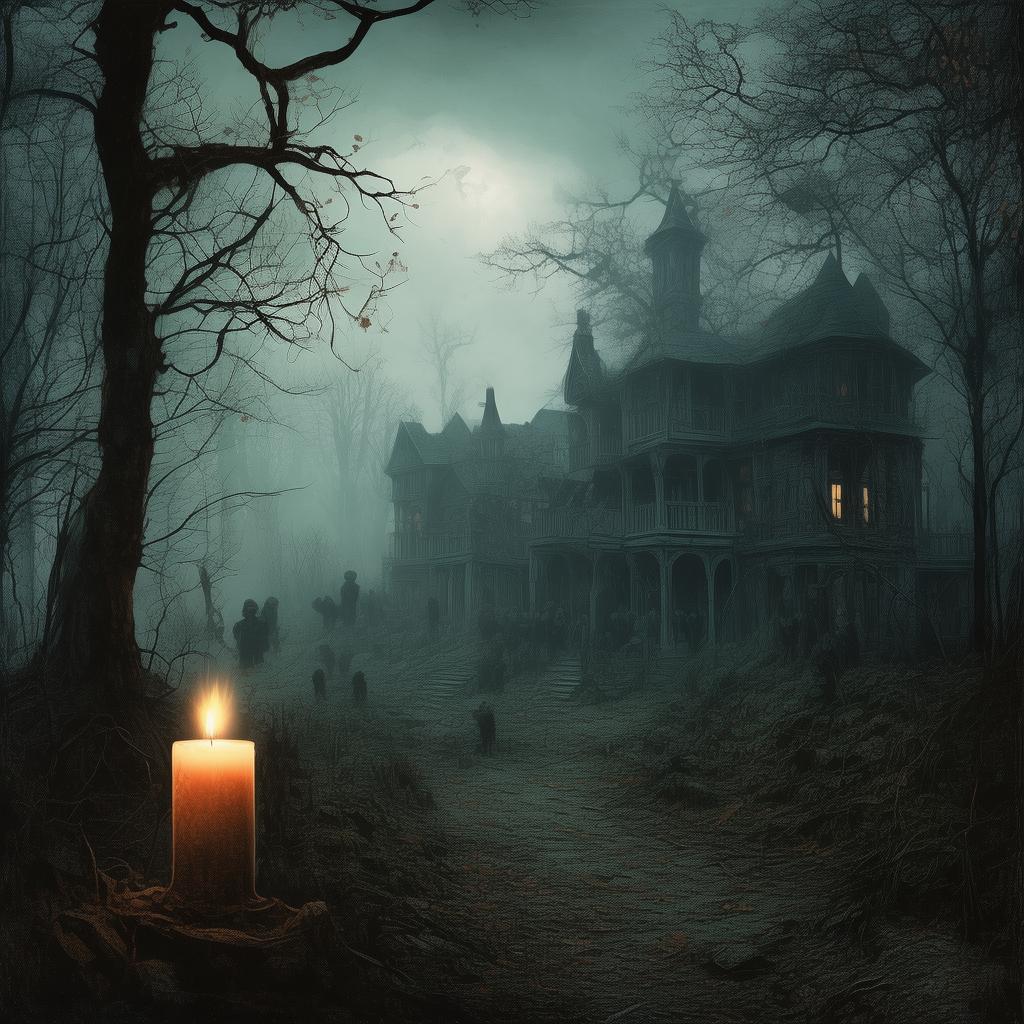The Critic's Last Judgment
In the quaint town of Eldridge, the art world was abuzz with the opening of a new gallery, "Whispers of Canvas." Nestled between the ancient oak trees and the whispering brook, the gallery promised to showcase the finest works of local artists, with a twist: every piece told a story, a tale that seemed to resonate with the very walls it adorned.
At the heart of the gallery stood a painting of a woman in a red cloak, her eyes gazing into the abyss. The artist, a reclusive figure known only as Red, claimed the woman was a ghost, her spirit trapped within the canvas. The townsfolk whispered, but the critics remained skeptical. Among them was Dr. Harold Whitmore, a renowned art critic known for his sharp wit and unyielding judgment.
Whitmore's arrival was met with a mixture of awe and apprehension. He was the first critic to visit the gallery since its opening, and the townspeople watched him with a mix of hope and fear. The gallery owner, Eliza, a former art student turned entrepreneur, greeted him warmly, eager for his praise or, worse, his scorn.
"Ah, the painting of the red cloak," Whitmore's voice echoed through the gallery. "A curious choice. Tell me, what story does this piece tell?"
Eliza's eyes sparkled with excitement. "The woman in the painting is a spirit, trapped by an artist's curse. They say she haunts the gallery at night."
Whitmore chuckled, a sound that could cut glass. "A spirit, you say? I have seen many a ghost story in my time, but a spirit in a painting? This is more than just art; it's folklore."

The next day, as Whitmore pondered the painting, a storm brewed outside. The wind howled through the gallery, and the painting of the red cloak seemed to pulse with a life of its own. Eliza, concerned, peeked into the gallery to find Whitmore lost in contemplation.
"Dr. Whitmore," she whispered, "are you alright?"
He turned, a look of surprise on his face. "Eliza, how did you get in?"
"I heard the wind and wanted to make sure you were safe."
Whitmore nodded, his gaze lingering on the painting. "This... this painting is something else. It feels like it's trying to tell me something."
As the storm raged on, Whitmore decided to take a closer look at the gallery's records. He discovered that the painting had been stolen from a museum in the city. The theft had gone unsolved, and the painting had been missing for years. Whitmore's eyes widened in realization. The painting was not just art; it was a clue to a missing masterpiece.
That night, as Whitmore prepared to leave, the gallery's lights flickered, and the painting of the red cloak began to glow. The air grew thick with tension, and Whitmore felt a strange compulsion to touch the canvas. As his fingers brushed against the cool surface, a vision of a woman in red, her eyes filled with sorrow, materialized before him.
"Who are you?" Whitmore demanded.
"I am the spirit of the painting," the woman replied, her voice echoing in his mind. "I am the spirit of the woman who once owned this masterpiece. I was betrayed and stolen from my home. I have been waiting for someone to notice me, someone who can help me find my peace."
Whitmore's heart raced. He knew this was no ordinary spirit. "What must I do?"
"The painting you see now is not just art; it is a part of me. It must be returned to its rightful place, where my story can be told and my spirit can rest."
The next morning, Whitmore confronted Eliza with the truth. Together, they tracked down the thief, a local artist who had stolen the painting to prove his skill. The thief, trembling with fear, returned the painting to the gallery, but not before Whitmore noticed a strange symbol etched into the frame—a symbol that matched the one on the stolen masterpiece.
As the painting was returned to its rightful place, the red cloak woman appeared before Whitmore once more. "Thank you, Dr. Whitmore," she said, her voice filled with gratitude. "You have freed me from this world. I can finally rest."
With a final glance at the painting, Whitmore nodded. "Rest well, spirit. Your story has been told."
Days turned into weeks, and the gallery continued to thrive. Eliza often caught Whitmore lost in thought, gazing at the painting of the red cloak. One day, as she approached him, he looked up, a strange look on his face.
"Eliza," he said, "do you ever wonder if art can be more than just beauty?"
She smiled, understanding the weight of his words. "Yes, Dr. Whitmore. Sometimes, I think art can be a window to another world, a bridge to the past."
Whitmore nodded, his eyes twinkling with a new found appreciation. "Then perhaps, it is time for us to open that window wider."
And with that, the gallery of "Whispers of Canvas" became more than just a place of art—it became a place of stories, a place where spirits could rest and be remembered, and where the power of art could heal the wounds of the past.
✨ Original Statement ✨
All articles published on this website (including but not limited to text, images, videos, and other content) are original or authorized for reposting and are protected by relevant laws. Without the explicit written permission of this website, no individual or organization may copy, modify, repost, or use the content for commercial purposes.
If you need to quote or cooperate, please contact this site for authorization. We reserve the right to pursue legal responsibility for any unauthorized use.
Hereby declared.









